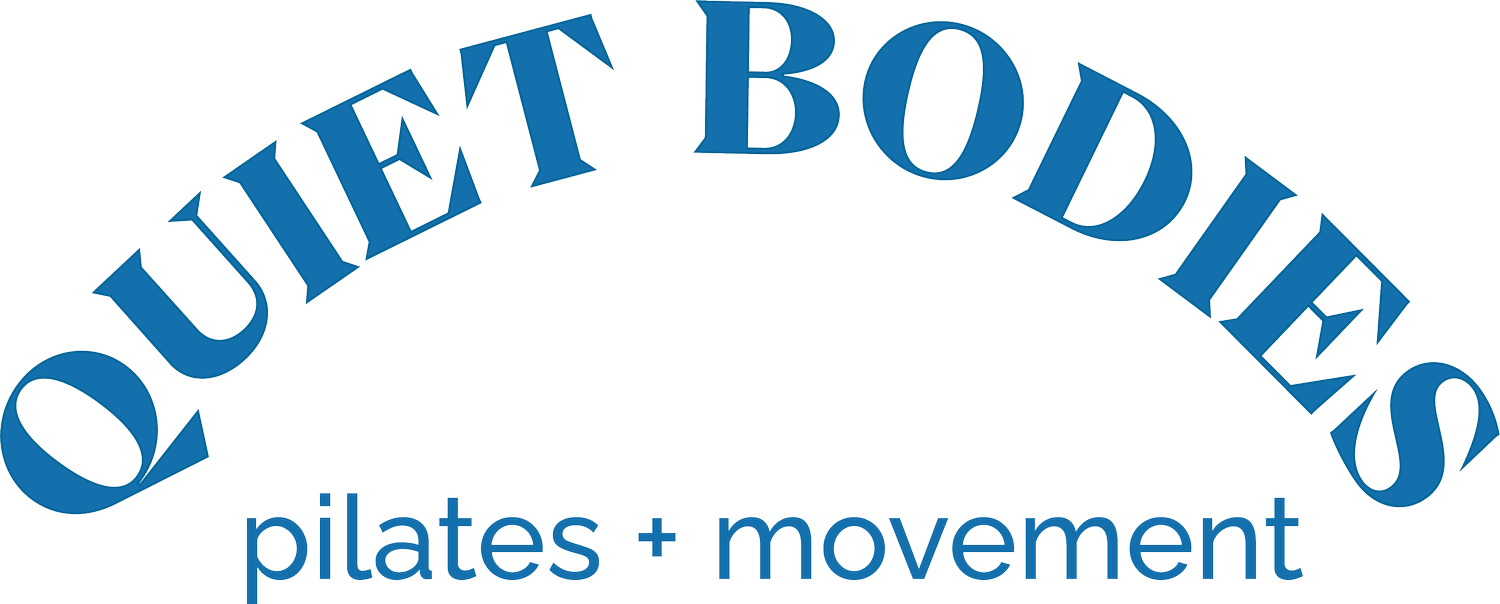Is your Pilates practice Classical or Contemporary?
Learn where your practice sits on the spectrum…
When you are out with your pals and casually discussing how cool Pilates is you may have heard someone referring to their Pilates practice as either Classical or Contemporary. This might have made you think “I wonder what kind of Pilates I practice?” Let’s look at the main differences between the two styles and learn how to discern how to choose a Pilates studio/Online Platform that suits your needs and goals.
Classical Pilates is deeply rooted in Joseph Pilates’ original method, Contrology.
Contrology consists of 34 mat-based exercises illustrated with excellent black-and-white photography and a wonderfully detailed description in Joe's book Return to Life. We have a copy on the shelf if you feel like flipping through it. With Classical Pilates, the real purist will never venture far from these 34 original exercises or the order in which they appear in the book. Joe also invented most of the Pilates equipment or “apparatus” that we use today, the most famous being the Reformer. When Joe introduced equipment to his method, he also expanded the repertoire to total around 400-500 exercises!
Contemporary Pilates is based on the Classical method but takes influence from physical therapy and other fitness methods.
We believe that early Contemporary Pilates pioneers saw an opportunity to expand Joe's original repertoire. They aimed to make the Pilates method more inclusive for people with injuries or special considerations, as well as those who may not be ready for the full expression of his method. They also *sometimes* incorporate updated exercise science. Some contemporaries are simply creative!
Contemporary Pilates doesn’t follow strict guidelines and the experience you get is unpredictable.
Pilates is an “umbrella” term. Contemporary Pilates studios all differ in their approach, which isn’t necessarily bad. On the other hand, Classical Pilates studios are more likely to offer a consistent approach when comparing them to each other. If you try one studio and it’s not for you, shop around, get curious and ask questions!
In Contemporary Pilates, you will find props like bands, blocks, weights, and balls.
Classical Pilates studios *sometimes* believe in only using props/apparatus invented by Joe Pilates. However, some folks love including other props. Props can add support, offer more challenge and provide variety in the already amazing and complex Pilates repertoire.
So what are we doing at QB?
We are lovers of the Classical method and the philosophy Joe brought with his exercise routine. But, we also pull from the Contemporary Pilates world to keep things fresh, welcoming and fun. This introductory passage from Return to Life is something that we strive to embody at the studio.
“Physical fitness is the first requisite of happiness. Our interpretation of physical fitness is the attainment and maintenance of a uniformly developed body with a sound mind fully capable of naturally, easily, and satisfactorily performing our many and varied daily tasks with spontaneous zest and pleasure.”
It's the natural and easy performance of daily tasks with “spontaneous zest and pleasure” that gets us pumped around here. We strive to live life like this and hope to help everyone who walks through our blue door or logs onto QB On-Demand to do the same. We follow the Classical order and structure in all of our QB Pilates classes but enjoy adding in the occasional prop or Contemporary variation to spice things up a little or aid with more challenging movements.
Is Classical Pilates the only legitimate way to practice Pilates?
This post isn’t to convince you one approach is better than the other, but rather to let you know there are choices in the big Pilates ocean! Classic or contempo, whatever floats your boat. The most important things are that we move together, get stronger, have a good time and hopefully throw in some zest and pleasure to our daily tasks.
SUGGESTED PILATES BOOKS
→Pilates’ Return to Life Through Contrology
- Joseph Pilates
→ Your Health: A Corrective System of Exercising that Revolutionizes the Entire Field of Physical Education
- Joseph Pilates
→ Voices of Classical Pilates: Collected Essays
- Peter Fiasca
→ Caged Lion: Joseph Pilates and His Legacy
- John Howard Steel
IN CLOSING →
The debate between Classical and Contemporary Pilates is ongoing. Some people in the industry have strong opinions about which is better. This can be intimidating for beginners and teachers and lead to "gatekeeping" in the industry.
For Pilates teachers, if you're doubting your approach or feeling like an imposter, go back to your "why." What led you to Pilates? What do you like about it? Just as there are many Pilates methods, many people are looking for exactly what you can offer. The sooner you teach from your heart and ignore the "Pilates Police," the sooner you'll find your people. What matters most is that you are helping people keep their bodies moving while creating an atmosphere for them to thrive and feel better in their bodies and minds.
Stay curious Pilates pals!


